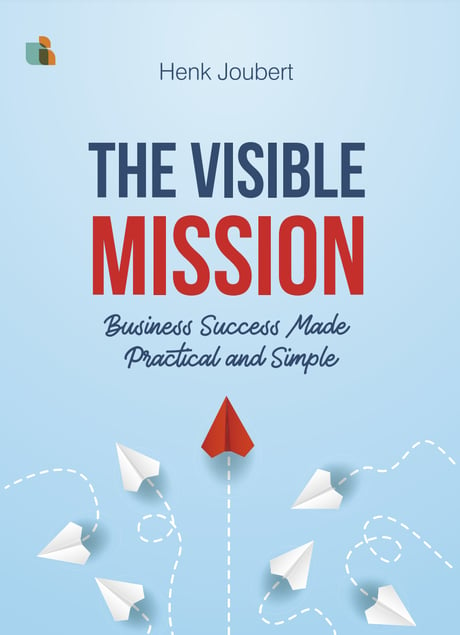The Visible Mission.
Business Success Made Practical and Simple.
The Visible Mission guides you to create a mission control center for your organization. It brings together some of the best business tools available, in a single place. It is a very practical and pragmatic approach that can be used by organizations of any stripe.
In the same way that the moon landing was guided from Mission Control, you will be able to set up and navigate your team, and partners through to success. The Visible Mission will show you that strategic management is not rocket science, neither is it voodoo.
At the end, you will not end up with a plan that will die in a presentation, or somewhere on a hard drive. You have a setup and an approach that is alive, immersive, and collaborative. You will analyze, strategize, plan, execute, track and adjust: all in one place.
The Visible Mission will enable you to turn your vision into action, and your actions into achievements, it will remove the silos in your organization, it will stop your team fighting itself, but rather focus on the joint goals. In addition, it will enable you to connect initiatives like digitization and innovation to where it will contribute to your success.
The approach described in The Visible Mission will not only help you focus on the right goals, but it will also guide you through developing your team's capabilities, mission after mission. When done consistently, you will become the envy of your competitors, but even better, you will impress and excite your customers.
Buckle up for the ride!
Get our free white paper on The Visible Mission and how to master Strategic Management!
Interview with Henk Joubert
Author of "The Visible Mission"
Congratulations on the publication of your book! Is that the first book you wrote?
Yes, this is the first. But there may be more!
In short, what is the book ‘’The Visible Mission’’ about?
The Visible Mission guides the reader through a simple process to create a visible mission for the organization. It brings all the critical parts needed to succeed together in one place. Imagine having a Mission Control center, with four walls, where you have the vision (where are we going, and how far are we?), the business blueprint and competitive landscape (think MRI of your business, and Radar of your environment), the “create customer” (who are they, and do we create awesome solutions to their problems), and finally “build team” (what team, tools, and processes do I need to succeed with my customers).
It is meant to be an immersive and immediate environment where the organization can know, analyze, plan, track execution, and adjust when reality shows itself different than the assumptions.
What made you write this book? Why did you decide to write down your thoughts and publish it as a book?
The ideas originated during my years working as enterprise and business architect. I was always trying to connect the dots between the applications, technologies, and the business processes, and capabilities, and again tried to connect these to the business strategies.
I discovered a lot of disconnections within the organizations, and it always seemed that everyone was just focusing very narrowly on their own little part of the larger piece. I also saw different parts of the organization in competition with other parts of the organization, fighting for resources, for applications, etc. This frustrated me and made my goal as enterprise and business architect impossible. Both these roles have an integrative role, bringing moving parts together as a whole.
In addition, I saw differences between strategies and execution. The most frustrating expression of this is the project portfolio before a major strategy change look virtually the same afterwards. How is this possible?
And the IT will develop their strategies while not asking the question how these strategies enable business outcomes.
Over the years I was able, with some amazing colleagues to start putting the pieces together. It was only after I attempted my own startup that I really started putting the pieces together. That led to the structure, and the processes described in The Visible Mission.
But there is also a larger picture to this. First, it is about increasing the chances of small and medium enterprises to succeed. When this happens, it leads to business diversification through which we create a dynamic and thriving society, as opposed to wealth concentration.
Second, The Visible Mission is also intended to be the first book. Although it primarily focuses on financial success, we cannot be blind to the social and environmental responsibilities we have as business leaders, which is why there are some hints of this already. I plan on doing additional work to make the social and environmental goals an equally important part of our business environment.
Who is your target audience and why should they read your book?
The target audience is small and medium enterprise CEOs and executives. This approach shows that strategic management is neither rocket science (it is simple and you likely doing a lot of it already), neither is it voodoo (it is not some pie-in-the-sky theoretical construct – there are real benefits in knowing what is going on in and around your organization).
The chances of a business surviving past 10 years are about 30%. It is very challenging, even though many of the ultimate causes of failure are preventable. For example, nor realizing that there was no market, ignoring our clients, etc.
The Visible Mission gives you as business leader, a framework, guides, and tools to improve your chances significantly. SME leaders typically have other training and skills than strategic management – I believe that, given the right tools and guidance, this is something that can be done effectively, and it is a lot of fun!
In addition, the visibility, the tangibility of this approach gives the leaders a great opportunity to communicate the vision, and the purpose of what the team are doing. Team members know why they show up every day, and they can be inspired, and inspire others.
How was the collaboration with Digital Innovation AG and did you collaborate with other experts?
As I mentioned before, I am very fortunate to have worked with several very capable people, at Northwestern Mutual, at Harley Davidson, with some academics, and then of course corporate and business leaders. In addition, The Visible Mission brings together world-class tools developed in Europe and North America. This is an example of standing on the shoulders of several giants.
With regards to Digital Innovation AG, by the time our paths crossed, the book was written already. However, when I shared the work with Christian Blümlein, CEO at Digital Innovation AG, and with Niek de Visscher, CEO at DI Blue, they both indicated that this is how they are working with their clients.
I guess one could look at the book as a formalizing of the structures and processes to what was happening, and it therefore became a very natural and comfortable fit! It also then allows us, in the larger Digital Innovation family to refine and improve the approach, always learning new, never accepting that “now we know”.
The Visible Mission also fits in very nicely in the larger portfolio of offerings at DI, especially with the Digital Transformation team.
In some ways, the most important collaboration is that we are using the framework and process as it is described in the book. We are not only saying this is a great tool for others to use, we use it because we get significant value from practicing what we preach.
In your book you are providing tools and frameworks for strategic planning and decision making, what separates what you are providing from what is already available on the market?
As mentioned before, The Visible Mission brings together world-class tools, all in one related structure. This is the one thing that makes it different – it ultimately is a tool to synthesize the critical elements to succeed. The visibility and the immediacy of the information (we use visualized models as much as possible) allows the participants to synthesize but also the identify inconsistencies in your environment.
For example, if your vision says something, then your products and value propositions should support that. If not, you immediately start seeing this.
Of course, this is initially uncomfortable, but the great news is that once you start addressing this, you are setting yourself and your organization up to truly start working together as a team.
The other difference in with The Visible Mission is that it does not allow you to create a plan, which goes into a slide deck, which eventually goes to slide-deck heaven somewhere in the cloud. No, The Visible Mission is the tool with which you plan, where your plan is made visible, and where the plan is monitored, and adapted.
The Visible Mission is also fundamentally practical. There is very little theory in the book. We want this to be usable, to be applicable, to be valuable.
What did you learn personally as well as professionally throughout the process of writing and publishing your book?
This is a great question!
When in our final year of high school, we as students were forced to teach each other physics and chemistry. We learned very quickly that to explain something to someone else, you really need to understand it. There was no faking it!
During the writing (and testing!) of the book, I discovered several blind spots in my original approach. I could not fake it. I had to figure it out. That also meant that I had to go back a few times and very humbly reconsider what I had done.
Finally, I also learned that to write a book is not about inspiration. It is primarily done by showing up every day, sit yourself down, develop a plan, a structure, and then work through that plan. And yet, there were several times where the inspiration really showed up. I think of inspiration as being like the really cool people that only shows up when the party is really going.
About the Author

Henk Joubert, Managing Consultant at Digital Innovation AG
Drawing on 30 years of experience as a software developer, enterprise and business architect, technology and business strategy, Henk Joubert brings a novel and powerful approach to business strategy, planning, and execution.
He draws on experience in multiple industries on three continents and four countries, bringing together world-class business and technology tools in eye-opening ways, learning from failures and building on successes.

